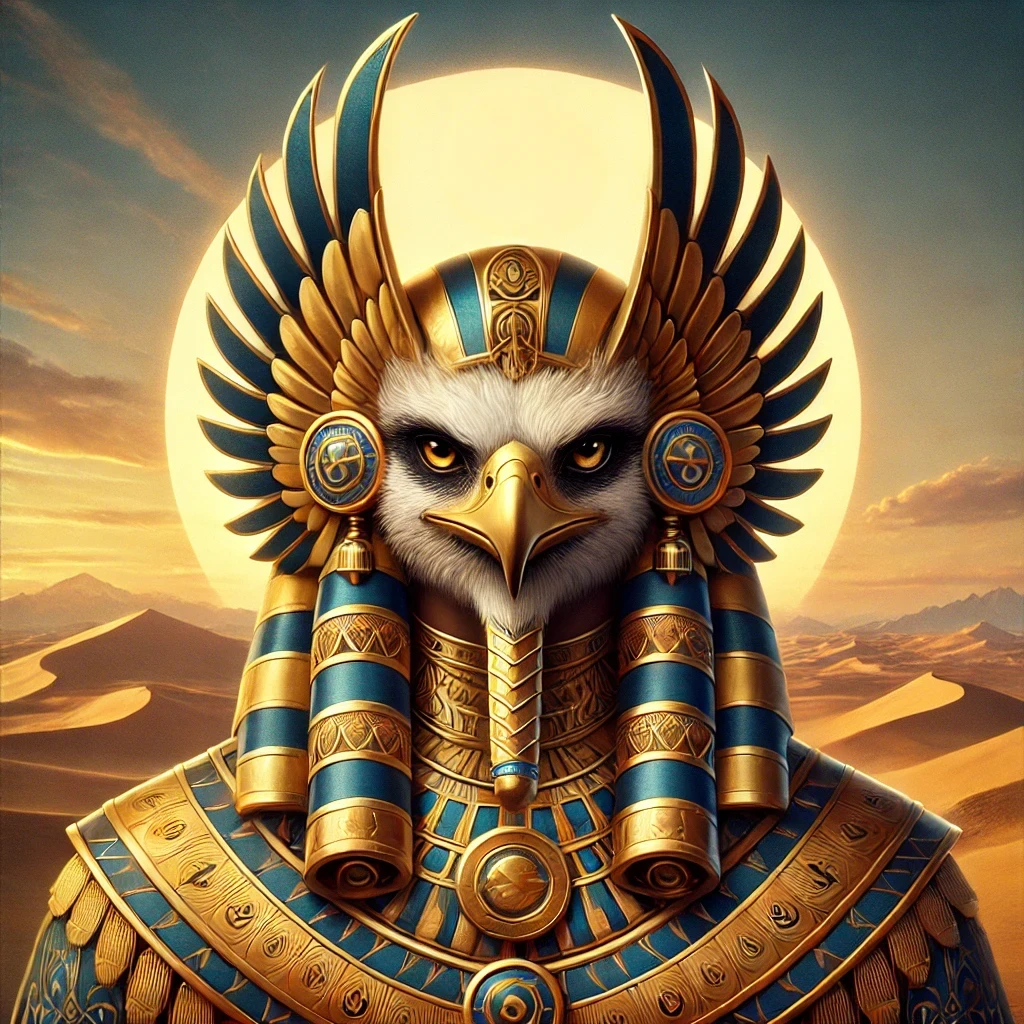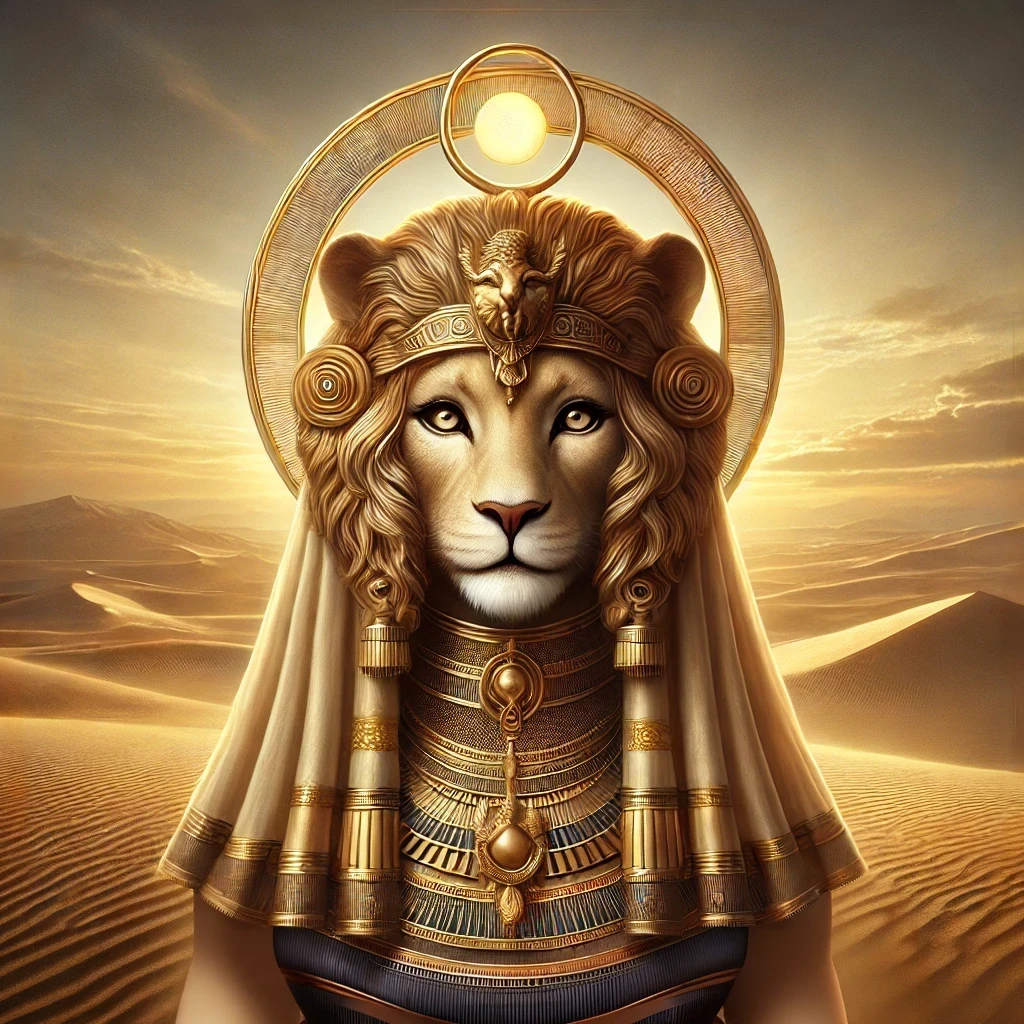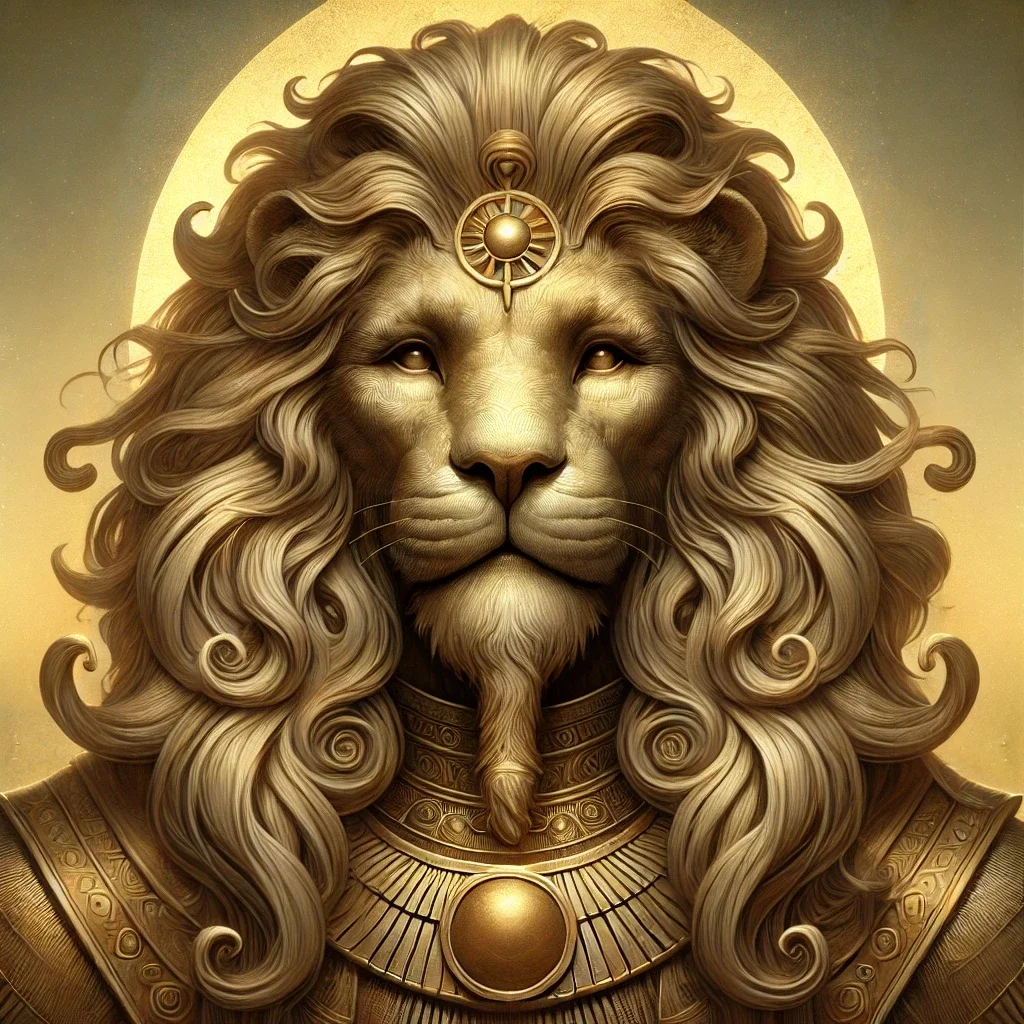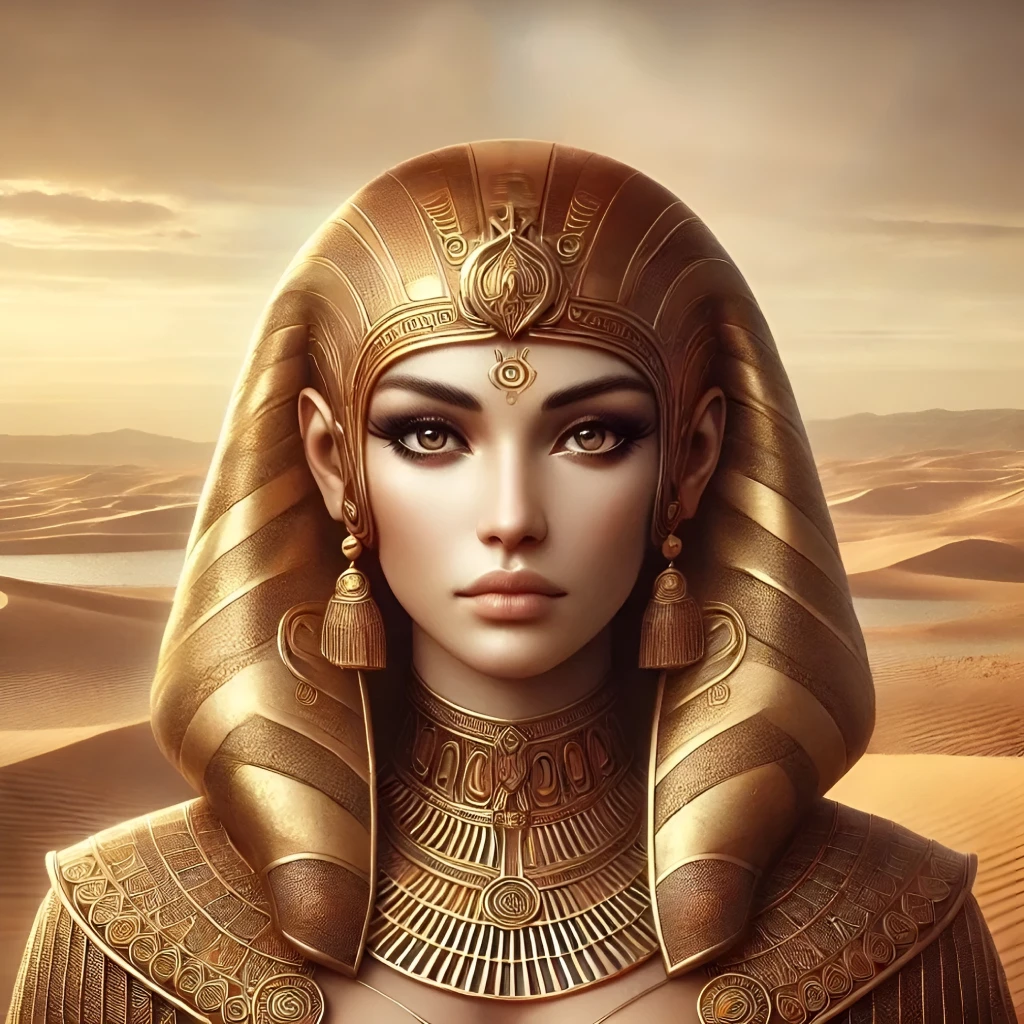Montu, also known as Mont, Monthu, Montju, Ment or Menthu, was revered as a god of war and the embodiment of the scorching desert sun. His name is thought to derive from the term “mntyw,” referencing nomads or warriors, aligning with his fierce and martial persona. Often titled “The Bull of Thebes” or “Lord of Strength,” this figure emerged as a prominent symbol of protection and military might during Egypt’s Middle and New Kingdom periods.
Origins
Historical Roots
Montu’s roots stretch back to the Old Kingdom, where he was primarily a regional god of Hermonthis (modern-day Armant). Over time, his influence expanded to Thebes, aligning him with the rise of this city as a powerful political and military hub.
Cult Centers
Initially worshipped in Hermonthis, the war god’s cult centers eventually included Medamud, Tod, and Karnak. Temples dedicated to him housed sacred bulls, symbolizing his strength and virility. The temples of Medamud and Karnak are particularly notable for their inscriptions detailing rituals and offerings to the deity.
Historical Evolution
In the Middle Kingdom, Montu’s martial attributes gained prominence as Egypt expanded its territories. During the New Kingdom, pharaohs such as Thutmose III invoked him as a patron of victory, solidifying his role as a national symbol of military power.
Appearance
Depictions in Art
Montu was often depicted with a falcon head, adorned with a solar disk and two upright feathers, symbolizing his solar connections. Occasionally, he appeared as a bull, emphasizing strength and virility. Some reliefs portray him wielding weapons, such as a curved sword or a spear, reinforcing his warrior identity.
Temple Representations
In temple carvings, he is shown standing resolutely or charging into battle. The craftsmanship of these depictions underscores his fearsome demeanor, designed to inspire both awe and reverence.
Abilities
War and Combat
Montu’s principal domain was warfare. He was believed to guide the pharaohs in battle, granting them invincibility and strategic prowess. His power extended to ensuring victory and instilling fear in the hearts of enemies.
Solar Connections
As a solar deity, he was linked to the sun’s fiery aspects, representing energy, vitality, and destructive power. This duality of creator and destroyer made him a unique figure in the Egyptian pantheon.
Protector of Kings
The deity’s protective qualities extended beyond the battlefield. He was seen as a guardian of the pharaoh’s divine right, maintaining order and cosmic balance.
Myths
The Bull of Montu
One prominent myth speaks of Montu’s transformation into a sacred bull, a symbol of his unrivaled power and fertility. This bull, venerated in temples, was considered an earthly manifestation of the god himself.
Battles with Chaos
Another legend describes him combating chaotic forces that threatened Egypt. These tales highlight his role as a defender of Ma’at, the divine order, against Isfet, or chaos.
Triumph in Thebes
Montu’s association with Thebes is celebrated in texts detailing his divine intervention during battles, where he’s credited with turning the tide in favor of the Egyptian forces.
Symbolism
Associated Imagery
Symbols such as the sun disk and double feathers reinforce his solar identity. The bull symbolizes strength and fertility, embodying his dynamic energy.
Weapons
Weapons depicted with Montu, such as spears and bows, are not just tools of war but symbols of his divine authority and protective nature.
Temples and Shrines
Montu’s temples often featured reliefs and statues emphasizing his power. His worship centers in Thebes, Armant, and Tod reflect his widespread veneration.
Associated Objects, Animals, Plants, or Minerals
- Sacred Bull: Bulls, particularly the Buchis bull, were sacred to him.
- Weapons: The khopesh (Egyptian sickle-sword) often symbolized his martial aspect.
- Gold: Representing the sun’s radiance and his divine authority.
Relationships
Connections to Other Deities
Montu was often associated with Ra, the sun god, sharing aspects of solar divinity. He also had ties to Amun during the New Kingdom, reflecting Thebes’ religious prominence.
Mythological Alliances
Texts suggest that he worked alongside other war deities like Sekhmet and Bastet, forming a divine cohort of protection and strength.
Worship by Pharaohs
Rulers frequently aligned themselves with Montu to legitimize their authority and successes in battle. Temples built in his honor often celebrated military conquests.
Trivia
- Montu’s association with the Theban rulers of the 11th Dynasty contributed to the city’s rise as a religious capital.
- The Buchis bull, considered an incarnation of Montu, was mummified and buried with great ceremony.
- His name appears in the titles of several pharaohs, such as Mentuhotep, meaning “Montu is satisfied.”
- Montu’s imagery was used as a military emblem on standards carried into battle.
- The god’s temples often featured massive gates, symbolizing his protective and martial prowess.



